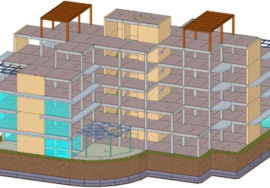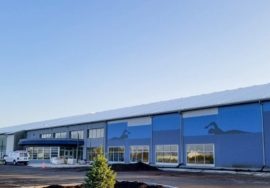
Changing Trends in Enterprises, Entrepreneurship, and Employment
There are a number of different trends shaping the evolution of the U.S. economy, one of which is the change in types of industries and the rise of the service sector. The service sector has grown from 20 to 27 percent of the economy since 1990, and is expected to grow further in the future, making up about two-thirds of the economy by 2020. Another major trend is that U.S. firms have become increasingly dependent on a global supply chain. This supply chain, which extends across the complex web of global industry exchanges, flows through a handful of countries.
Economic trends in the United States have changed for the better over the past three decades: The real (inflation-adjusted) income of the median U.S. household has increased by $95,000 over the same period, as measured by the popular income and price inflation indexes, which adjust for inflation and account for changes in population from year to year.
The ownership of small businesses has grown increasingly important in the U.S., which has the highest proportion of small businesses in the world. Roughly 10 million small businesses owned by women and minority entrepreneurs are responsible for nearly half of the new jobs created since 2000. These small businesses work to create or maintain jobs for more than 2 million people and support 1 in 4 American workers, so it is vital to understand what influences these entrepreneurs.
The changing job landscape over the past decade has created a labor shortage by shrinking the number of jobs that are available, particularly in the lower-paying fields of retail and food service,’
Businesses, entrepreneurs, and employment in the United States have been changing over the past decade, as the economy has fluctuated in the wake of the Great Recession.
The economy has changed over the past decade, as the labor market has shifted and businesses have adjusted to the shifting job landscape. The most significant change in the job market has been the shrinking number of jobs that are available, particularly in the lower-paying fields of retail and food service. This shortage of jobs has created a labor shortage, which has driven up wages and forced businesses to find new ways to fulfill their needs. The changing job landscape has also created a new class of entrepreneurs, who are responsible for creating new jobs.
The changing job landscape in the United States has created a labor shortage, by shrinking the number of jobs that are available, particularly in the lower-paying fields of retail and food service. Businesses have been changing too, as the economy has fluctuated in the wake of the Great Recession. Entrepreneurship has grown in the United States, with roughly 3 million people starting businesses each year since 2000. Women have become a larger share of entrepreneurs, with women-owned small businesses accounting for 49 percent of new businesses started by women since 2000.
The economy has been changing over the past decade as businesses, entrepreneurs, and employment have been affected by the Great Recession. The most significant change has been in the business landscape: the number of small businesses has grown in importance as the economy has recovered from the recession. Roughly 10 million small businesses owned by women and minority entrepreneurs are responsible for nearly half of the new jobs created since 2000. These small businesses work to create or maintain jobs for more than 2 million people and support 1 in 4 American workers, so it is vital to understand what influences these entrepreneurs.
The most significant economic trend of the past decade has been the recovery from the Great Recession. The economy took a dive in 2008, with the most significant impact on businesses and employment. The recession caused the unemployment rate to spike, with the highest rate recorded at 10 percent in October 2009. The labor market has continued to recover since then, with the current unemployment rate of 3.5 percent the lowest it has been in nearly a decade.
The job landscape has also been changing over the past decade, as the economy has fluctuated in the wake of the Great Recession. The job market has recovered slowly, creating a labor shortage by shrinking the number of jobs that are available, particularly in the lower-paying fields of retail and food service. This shortage has made it more difficult for Americans to find jobs, which in turn has increased the amount of time that they are unemployed. However, the changing job landscape has also created a number of new jobs, particularly in the fields of digital technology and health care.









